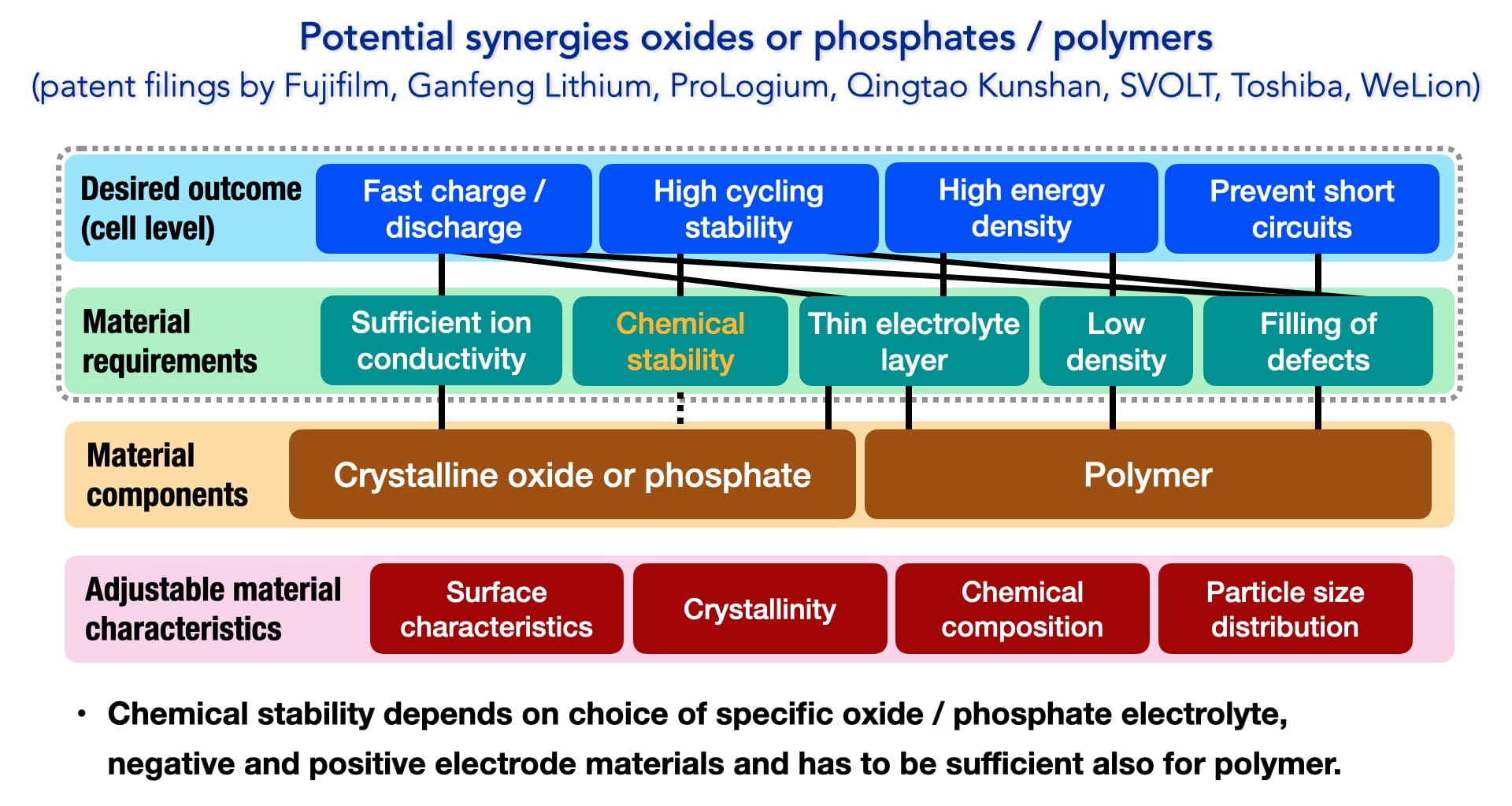-
Recap – Battery Show Europe 2021 – Stuttgart (Germany)
Posted on 2021-12-03
-
Technical discussions and presentations in Stuttgart provided important insights how positive / negative electrodes and electrolytes emerge and
converge towards solid-state and semi-solid Li-ion batteries.
-
Amprius impressively illustrated their capability to produce 100% Si negative electrodes that permit for energy densities in liquid electrolyte cells of up to 450 Wh/kg / 1,300 Wh/L,
albeit still for niche applications at this stage. A key point that still has to be addressed for EV applications is calendaric longevity (target: >10 years).
These results can be seen as a harbinger for gradually increased Si-content also in large scale applications like EVs.
-
E-magy presented a novel and potentially low cost Si melting approach for the formation of porous Si.
While for liquid electrolytes, the question could be raised if such a material has to be encapsulated inside a (costly) shell, this might not
be necessary in combination with solid electrolytes. With solid electrolytes, excessive SEI formation can more easily be avoided even in case of a comparably
high negative electrode / electrolyte interface area.
-
SVOLT presented its single crystalline, Co-free, doped NMX material, which contains more than 70% Ni and less than 30% Mn. Outperformance with respect to NMC811
was claimed with respect to all performance aspects aside from a slightly lower energy density (ca. 6%).
-
Factorial Energy made a business-oriented presentation that highlighted the massive interest by EV makers (including their partners Daimler, Hyundai / Kia, Stellantis)
in solid-state or semi-solid batteries. As Blue Solutions and Daimler have put EVs and E-buses with lithium metal solid-state
cells on the road (cell operation at ca. 80 °C), lithium metal negative electrodes that can be operated at room temperature are being fervently pursued.
-
The b-science.net presentation focused on combinations of different solid electrolyte material
classes in cells, which can lead to performance and cost benefits (see image). Such electrolyte combinations could allow for bipolar cells, improved inherent safety
and increased upper operating temperature limits (potentially 120-140 °C), resulting in further prospective energy density benefits at the pack level.

-
Reactions to this recap can be found on LinkedIn.
-
A LinkedIn post on the b-science.net presentation by E-Magy can be found here.
|